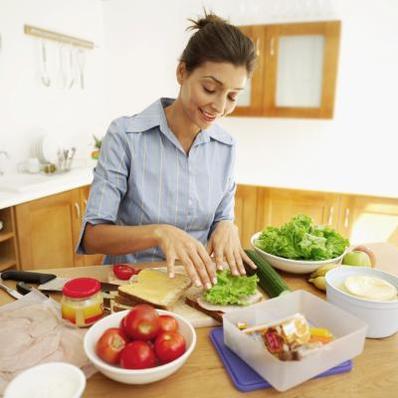A brown bag lunch can produce a staggering amount of waste — leftover foods, plastic bottles and packaging and the brown bag itself. Packing a waste-free lunch for your child makes a significant difference. Save yourself money and benefit the environment by packing nutritious and environmentally friendly lunches for school, work, traveling and picnics.

Step 1:
Pack reusable items. Avoid the brown paper bag that ends up as waste; instead, pack your lunch in a canvas lunch bag —- it’s sturdy, easy to clean and often equipped with insulation to keep foods fresh. Replace plastic baggies with reusable containers to hold snacks and a sandwich. For a waste-free lunch, include other reusable items, such as a refillable water bottle, ice pack, utensils and a cloth napkin.
Step 2:
Recycle plastics and aluminum. It’s best to avoid plastics such as water and juice bottles and foods with heavy packaging. If you’re on the go, however, sometimes it’s the only option. Be sure to dispose of plastics or soda cans in the correct recycling bin rather than in the trash bin headed for the landfill.
Step 3:
Don’t let any food go to waste. If you didn’t get around to your lunch yogurt, preserve it for the next day. Eliminate food waste at home by using dinner leftovers for lunch. For a healthy serving of dietary fiber, select whole-grain breads, such as whole wheat or whole rye for your sandwich.
Step 4:
Select unpackaged fruit and vegetables; though designed to be convenient, the packaging creates unnecessary waste. Visit the farmers market and stock up for the week with local produce. Shop for potassium-rich fruits, such as bananas, prunes and honeydew melon, that give a nutritional boost during the lunch hour. Accompany raw broccoli, cauliflower or carrot sticks with a low-fat dressing for a great afternoon snack.
Step 5:
Buy snack foods in bulk. Individual packaging of crackers, cheese and other snacks generates waste. Buying in bulk is less costly and waste-free. For snacks rich in vitamin E, fill up a bag of seeds and nuts, such as sunflower seeds, almonds and hazelnuts.
Step 6:
Compost fruit and veggie scraps. These organic materials are excellent nitrogen sources for composing and contribute to making fertile soil. Shred your scraps and mix them into your backyard or school compost heap. Be sure to bury food scraps to make compost piles less attractive for wildlife.
via Tumblr http://innovativegreenliving.tumblr.com/post/41932094036
This comment has been removed by the author.
ReplyDeleteThanks for the post, it's an interesting article. Here sharing such a great tip to packaging nutritional food. It's beneficial to save our money and the atmosphere by packing nutritious and environmentally helpful for school, work, traveling and picnics. Packaging Market Report
ReplyDelete